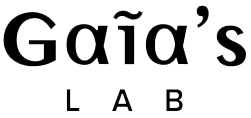Resveratrol is a phytoalexin produced by plants to protect themselves against environmental stress or invading microorganisms.
It has been hypothesized that Resveratrol contributes to the ability of Mediterranean diet which is rich in polyphenols to reduce the incidence of age-related diseases. French Paradox is another phenomenon where people in France have a relatively low incidence of coronary heart disease while having a diet rich in saturated fats. It is widely believed the consumption of red wine is a contributing factor for the French Paradox.
Resveratrol could also explain the efficiency of “Polygonum multiflorum dried roots” which is one of the most commonly used traditional Chinese medicines. This is officially listed in the Chinese Pharmacopoeia.
Resveratrol is a stilbenoid naturally produced by several plants to fight against the growth of bacteria or fungi.
Another ingredient that caught our attention is Malabar Wood or Indian Kino that is quite analogous to Resveratrol. A high content of stilbenes including resveratrol and pterostilbene are found in the bark of the Malabar Wood tree. Several phytoalexins are antimicrobial compounds synthesized by plant cells in response to attack by grazing animals or pathogen infestation. These are stress induced stilbenes signaling defense responses, protection against UV light damage etc. from the tree against external stimuli.
We use Malabar Wood in our Age Defying Cream.
Pterostilbene shares many chemical, physiological and pharmacological similarities with resveratrol.
Why Pterostilbene is better than Resveratrol?
- Better absorbed, and more biologically active than resveratrol.
- Pterostilbene antifungal properties are 5-10 times more powerful than resveratrol
- Pterostilbene was found to be solely responsible for the anti-inflammatory effects of Pterocarpus marsupium extract
- Pterostilbene is metabolically more stable than resveratrol and confers intended benefits without undergoing extensive metabolism as resveratrol
Benefits of Pterostilbene
The benefits of stilbene include:
- Potent anti-oxidant properties
- Activator of the synthesis of Sirtuin
- Anti-inflammatory
- Wound healing activity
- Anti-bacterial
- Lipolysis enhancer
Pterostilbene was identified as the major phenolic compound in Drakshasava, a traditional Ayurvedic preparation used to treat cardiovascular and related problems and in wood of Pterocarpus marsupium or Malabar Wood or Indian Kino used by Ayurvedic practitioners in the treatment of diabetes.
Citations:
Adrian, M, et al. “Stilbene Content of Mature Vitis Vinifera Berries in Response to UV-C Elicitation.” Advances in Pediatrics., U.S. National Library of Medicine, Dec. 2000, www.ncbi.nlm.nih.gov/pubmed/11312782.
Alosi, J A, et al. “Pterostilbene Inhibits Breast Cancer in Vitro through Mitochondrial Depolarization and Induction of Caspase-Dependent Apoptosis.” Advances in Pediatrics., U.S. National Library of Medicine, 15 June 2010, www.ncbi.nlm.nih.gov/pubmed/20031172.
Billack, B, et al. “In Vitro Evaluation of the Cytotoxic and Anti-Proliferative Properties of Resveratrol and Several of Its Analogs.” Advances in Pediatrics., U.S. National Library of Medicine, www.ncbi.nlm.nih.gov/pubmed/18516504.
Chakraborty, A, et al. “In Vitro Evaluation of the Cytotoxic, Anti-Proliferative and Anti-Oxidant Properties of Pterostilbene Isolated from Pterocarpus Marsupium.” Advances in Pediatrics., U.S. National Library of Medicine, June 2010, www.ncbi.nlm.nih.gov/pubmed/20152895.

Leave a comment